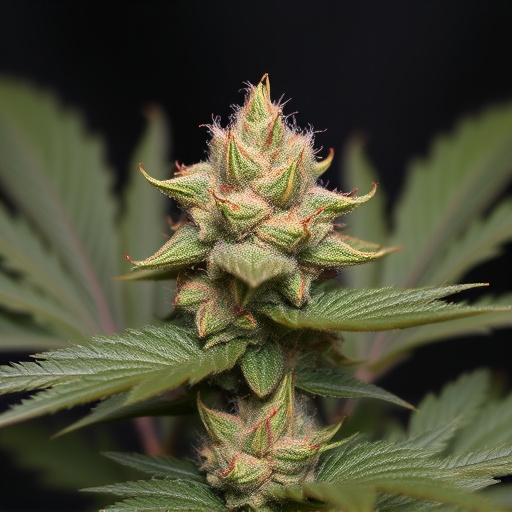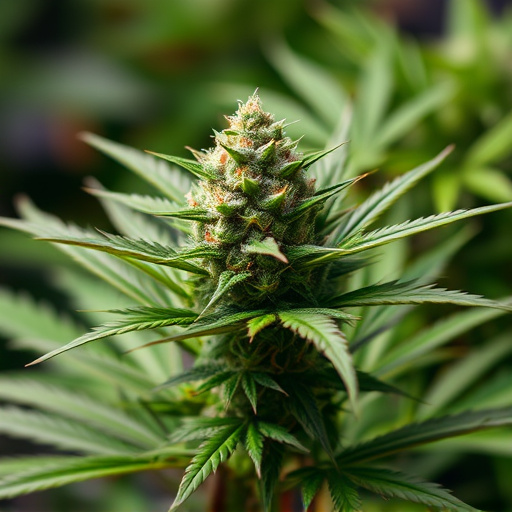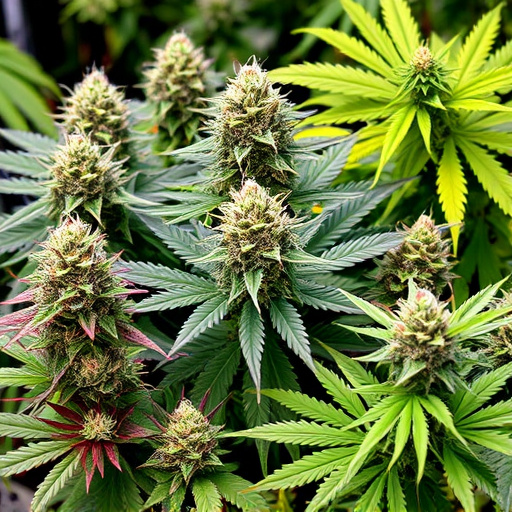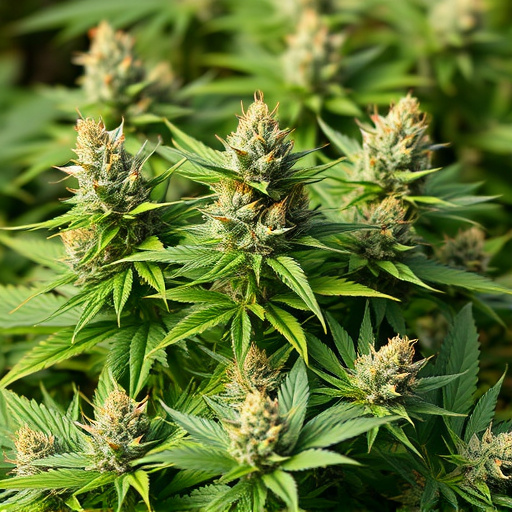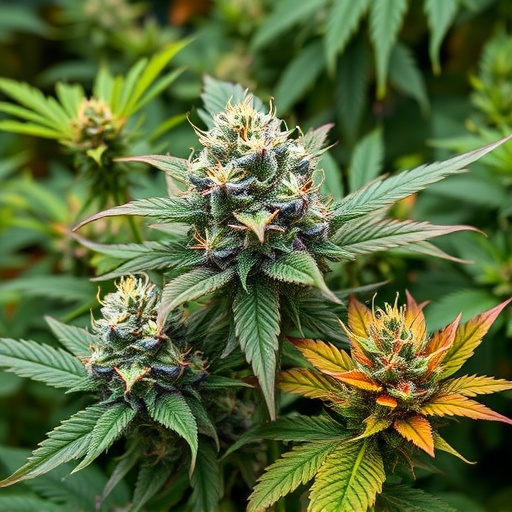The distinct colors of various cannabis strains are driven by genetic diversity, unique terpene profiles, and pigments like anthocyanins. These factors not only enhance visual appeal but also serve essential roles in plant protection and pollination. Growers and breeders leverage this knowledge to cultivate strains with desirable colors and therapeutic attributes, offering consumers a wide range of tailored experiences based on the interplay between genetics, chemistry, and aroma.
“Unraveling the Mystique: Exploring the Causes of Purple, Red, and Blue Weed
Cannabis enthusiasts have long been captivated by the diverse colors adorning various strains. From vibrant purples to deep blues and fiery reds, these hues offer more than just aesthetic appeal. This article delves into the captivating world of cannabis pigmentation, revealing the intricate interplay of genetic factors, terpenes, and environmental conditions that contribute to the stunning variations among different cannabis strains.”
- Genetic Factors and Terpene Profiles
- – How genetic diversity leads to varied pigment expression
- – Role of terpenes in determining color and potential effects on aroma and effect
Genetic Factors and Terpene Profiles
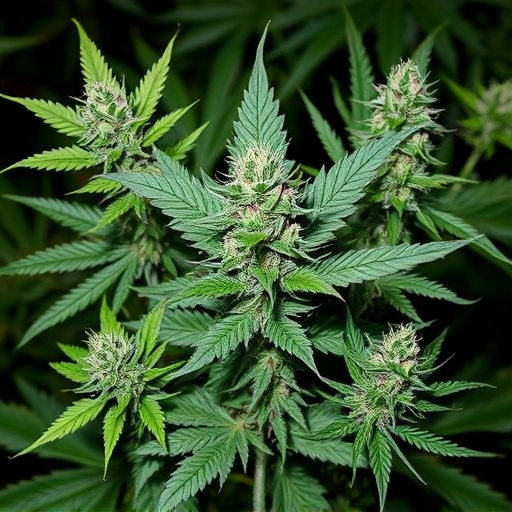
Different cannabis strains display a vibrant array of colors, including purple, red, and blue hues, which are often associated with unique genetic factors and terpene profiles. The pigments responsible for these colors play a significant role in attracting pollinators and protecting the plant against environmental stressors. One key aspect is the presence of anthocyanins, natural compounds that give flowers their red, purple, and blue colors. Varieties known for their deep hues often contain higher levels of these anthocyanins, which can be influenced by genetic mutations and environmental conditions.
Genetic diversity among cannabis plants contributes to the wide range of terpene profiles observed in different strains. Terpenes are aromatic compounds that not only give each strain its distinct smell but also play a role in determining color. Certain terpenes can interact with chlorophyll, affecting its absorption and reflection of light, which subsequently influences the plant’s overall coloration. Understanding these genetic factors and their impact on terpene profiles is crucial for growers aiming to cultivate specific colors or select strains with desired characteristics based on visual appeal and potential therapeutic benefits.
– How genetic diversity leads to varied pigment expression
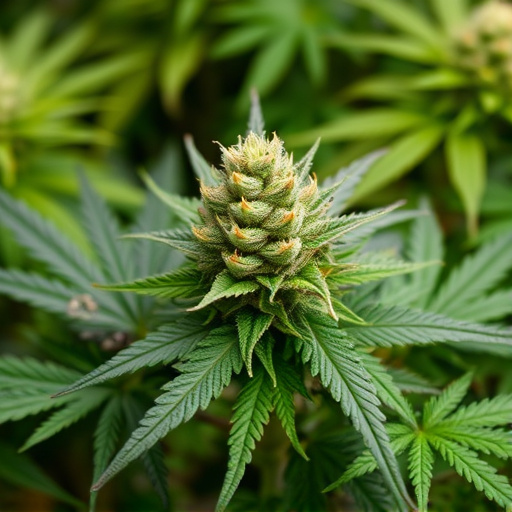
Genetic diversity plays a pivotal role in the varied pigment expression observed among different cannabis strains. Each strain possesses a unique genetic makeup, which dictates the types and quantities of cannabinoids and terpenes produced. These chemical compounds not only contribute to the distinct aroma, flavor, and effects associated with each strain but also influence the color profile. For instance, certain genetic variations can lead to higher levels of anthocyanins, natural pigments responsible for colors ranging from red to blue, resulting in purple or reddish-blue hues. Conversely, other genetic factors may enhance the presence of carotenoids, yielding yellow or orange tints.
Understanding these genetic underpinnings is crucial when considering the vast array of different cannabis strains available today. breeders exploit this diversity to create novel varieties with specific color characteristics, catering to both aesthetic preferences and potential therapeutic benefits. The intricate interplay between genetics, pigments, and chemistry contributes to the rich tapestry of cannabis colors, adding another layer of intrigue to an already multifaceted plant.
– Role of terpenes in determining color and potential effects on aroma and effect
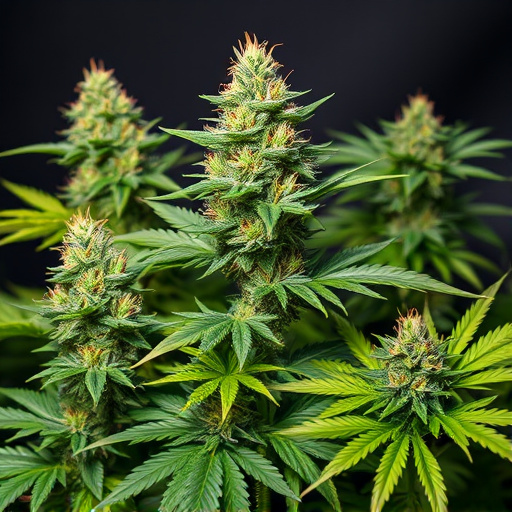
The unique colors observed in various cannabis strains, including purple, red, and blue, are not random but meticulously crafted by nature. These hues are largely determined by terpenes, aromatic compounds that play a crucial role in the plant’s overall chemistry. Terpenes not only contribute to the distinctive aroma of different cannabis strains but also influence their potential effects on users. For instance, certain terpenes like linalool, known for its calming properties, are often associated with strains that have a relaxing and sedative impact. On the other hand, myrcene, responsible for earthy and fruity scents, is linked to strains that induce euphoria and alleviate pain.
The intricate interplay between terpene profiles and cannabinoids creates a diverse range of experiences across different cannabis strains. As such, understanding the role of these compounds is essential for both cultivators aiming to breed specific traits and consumers seeking particular effects. This knowledge allows for a more tailored approach to cannabis consumption, ensuring users can choose strains that align with their desired outcomes.
The vibrant hues of purple, red, and blue in cannabis flowers are not mere aesthetics; they result from intricate genetic factors and terpene profiles. Genetic diversity within different cannabis strains leads to varied pigment expression, with specific terpenes playing a pivotal role in determining color. These compounds not only contribute to the visual appeal but also significantly influence the aroma and potential effects of each unique strain. Understanding these nuances allows cultivators and enthusiasts alike to appreciate the complex interplay between genetics and phenotype in the diverse world of cannabis.


